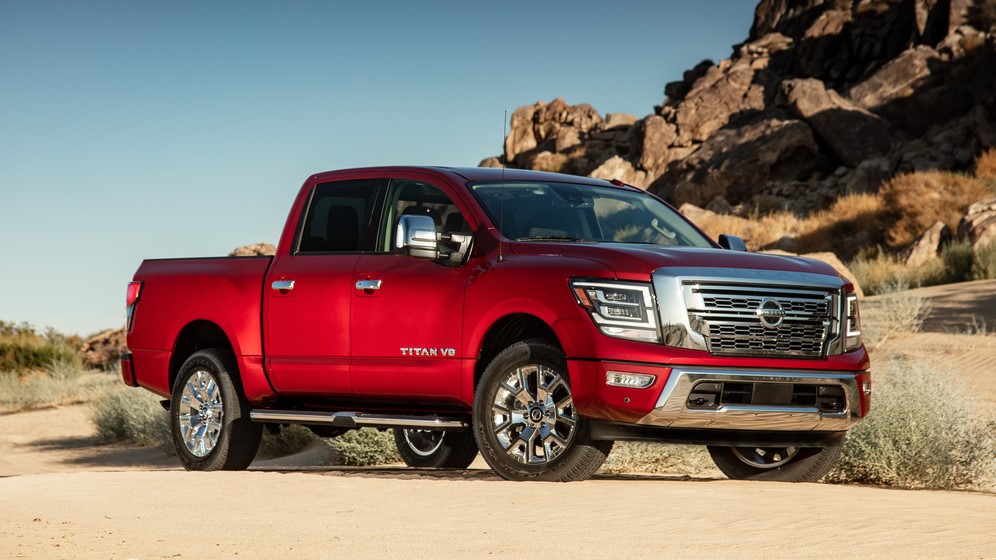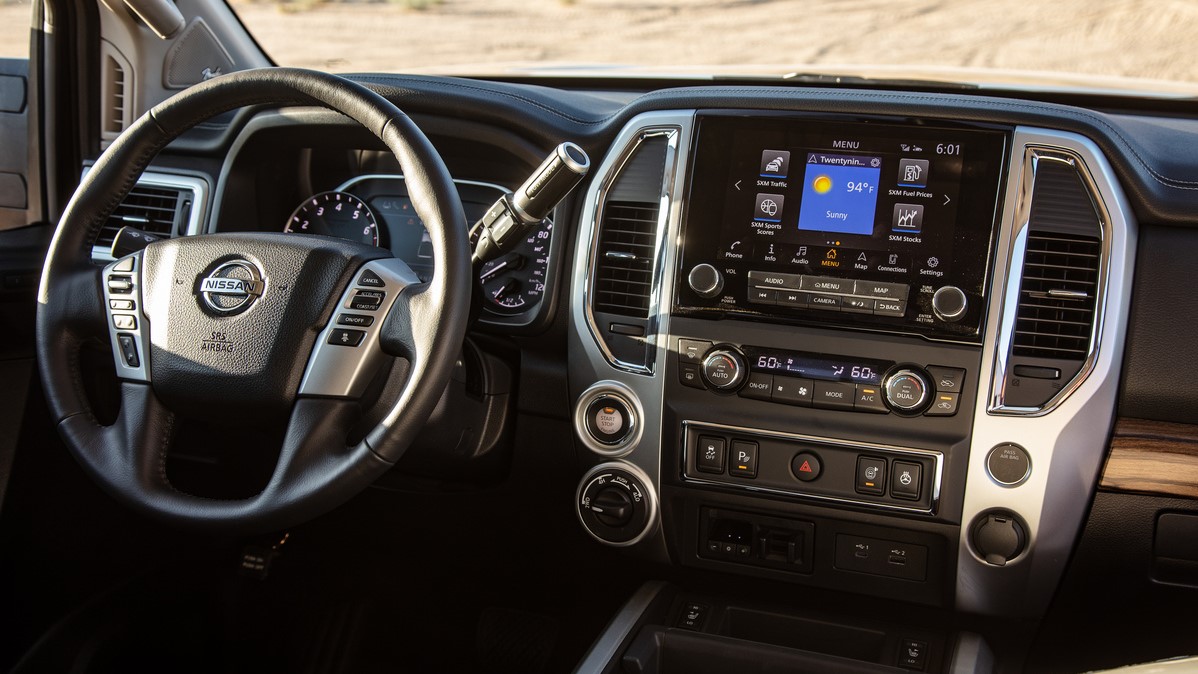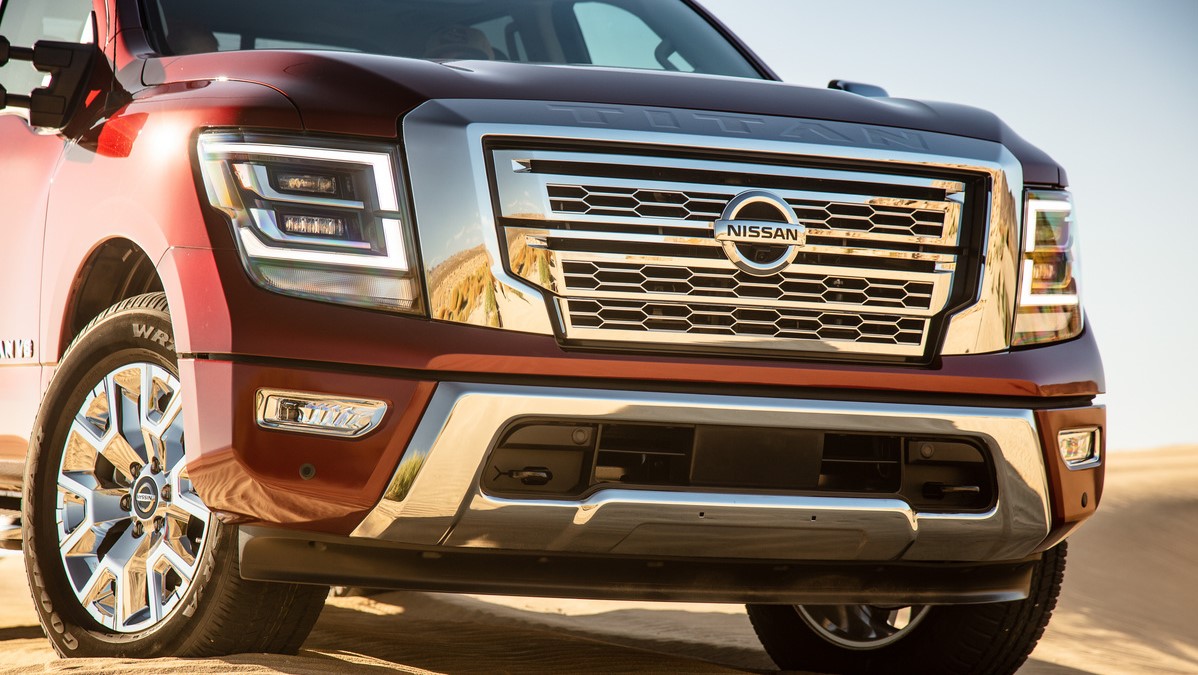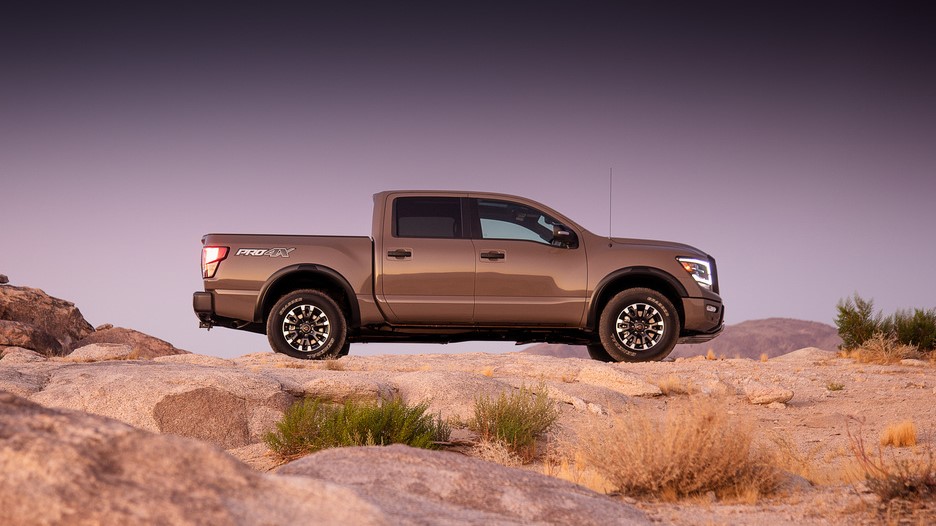With the 2020 Nissan Titan, driving a full-size truck just got a little easier
Handling a huge vehicle has never been safer

It’s all about the sensors. That seems to be the current mantras for all automakers who are slowly making self-driving vehicles more possible.
In a recent test of the Nissan Titan full-size truck, I noticed all of the sensors right away. When I backed out of my garage, when I parked at the mall, when I arrived at an intersection known for being a bit hectic. There are sensors pointing forward, to the side, and to the rear at all times.
Backing out of my garage might not seem too stressful, but it can be. There are kids everywhere, my wife tends to park right behind me at random times, and I’ve been known to leave my bike sitting behind parked cars. When you move backwards, the Titan uses a sensor that can detect objects behind you and alert you to dangers.

If you don’t quite notice these obstructions, the Titan uses a technology called Rear Automatic Braking to bring you to a full-stop. Bike saved, in my case.
At that intersection, it gets even more interesting. The Titan is a massive truck and it can be hard to tell where you sit in the road at times. When you pull out in traffic, a sensor can alert you to other cross-traffic and even pedestrians. This feature is called Automatic Emergency Braking with Pedestrian Detection and can brake if you fail to respond as well.
Rear Cross Traffic Alert watches for other cars creeping up on you from the rear, which is useful in intersections when you can’t quite see behind you. Sensors also look to your side for vehicles in the next lane over, they watch for lane markings and can alert you if you drift out of your lane on the highway.

They can even spot a slowdown up to two cars in front of you on the highway. Known as Forward Collision warning, it’s a sensor that can look for congestion even when you can’t quite see it yourself because your forward view is obstructed.
Get daily insight, inspiration and deals in your inbox
Sign up for breaking news, reviews, opinion, top tech deals, and more.
(As a quick tech diversion, the sensor actually bounces the signal around the car in front of you and can detect two cars ahead. If you have ever looked up a weather report on your phone, you know how this works. The Doppler radar uses for tracking weather does roughly the same thing, measuring the distance of a signal over and over to track storm fronts.)
The road ahead
Where do we go from here? That’s a question I’ve been asking for a few years now writing this column. It’s clear we will use more and more sensors, detecting objects, highway impediments, and people but also connecting to construction zones changes, new roadways and off-ramps, businesses located near us, and monitoring accidents in real-time, even as they occur.
The sensors are not only getting better and more common in all cars, they are now more affordable for the automakers who install them in even lower cost cars.
That’s good news for all of us. The Nissan Titan is just one example of how multiple sensors can help in a variety of conditions, some that are hard to predict. I’m all for this type of innovation, especially if the driver doesn’t have to stay quite as vigilant at all times.

On The Road is TechRadar's regular look at the futuristic tech in today's hottest cars. John Brandon, a journalist who's been writing about cars for 12 years, puts a new car and its cutting-edge tech through the paces every week. One goal: To find out which new technologies will lead us to fully self-driving cars.
- The best electric bikes and the best electric scooters
John Brandon has covered gadgets and cars for the past 12 years having published over 12,000 articles and tested nearly 8,000 products. He's nothing if not prolific. Before starting his writing career, he led an Information Design practice at a large consumer electronics retailer in the US. His hobbies include deep sea exploration, complaining about the weather, and engineering a vast multiverse conspiracy.
